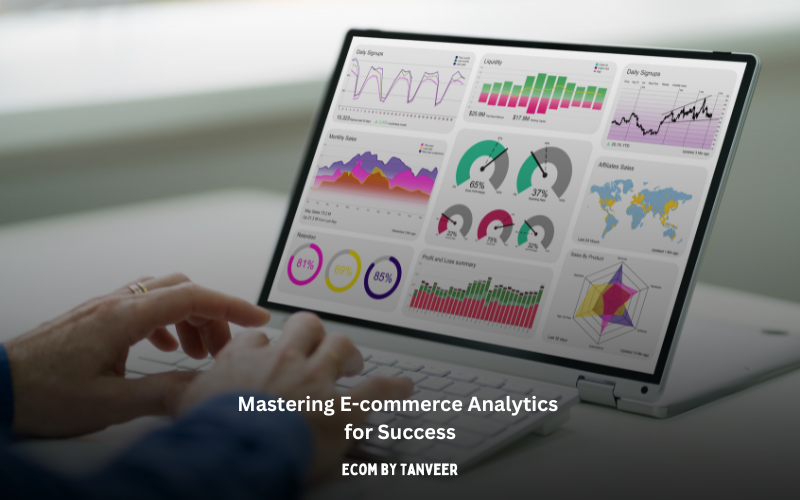In the bustling world of online retail, understanding your e-commerce analytics is not just beneficial—it’s crucial. Analytics provide a window into the effectiveness of your business strategies, highlighting what works and pinpointing areas needing improvement. This comprehensive guide delves into the essential metrics every e-commerce business should monitor to ensure success, supported by over 13 years of industry expertise.
The Significance of E-commerce Analytics
Effective e-commerce management hinges on data-driven decisions. By closely monitoring specific analytics, you can optimize your operations, enhance customer experience, and increase profitability. This not only helps in refining marketing tactics but also in streamlining the entire sales process.
Why Monitor E-commerce Analytics?
- Strategic Insights: Analytics provide crucial insights that help in making informed strategic decisions.
- Customer Understanding: They allow you to understand customer behavior and preferences more deeply.
- Performance Enhancement: Regular monitoring and analysis lead to continuous improvement in business operations.
Essential E-commerce Metrics to Track
Conversion Rate
This metric is pivotal as it measures the percentage of visitors who complete a desired action (like making a purchase) out of the total number of visitors.
- How to Calculate: Conversion Rate = (Number of Conversions / Number of Visitors) x 100
- Optimization Tips: Enhance product descriptions, improve site usability, and streamline the checkout process.
Average Order Value (AOV)
AOV tracks the average dollar amount spent each time a customer places an order. Increasing your AOV is a direct way to boost revenue.
- Strategies to Increase AOV: Implement up-selling and cross-selling techniques, offer bundles, and promote higher-value products.
Traffic Sources
Understanding where your site’s traffic comes from can help tailor your marketing efforts more effectively.
- Key Sources: Organic search, paid ads, social media, email marketing, and direct traffic.
- Action Points: Optimize your SEO strategy, refine your ad campaigns, and strengthen your content marketing.
Advanced Metrics for Deeper Insights
Customer Lifetime Value (CLTV)
CLTV predicts the total value a business can reasonably expect from a single customer account throughout the business relationship.
- Calculation and Importance: Calculate CLTV to focus on retaining high-value customers and developing loyalty programs.
- Increasing CLTV: Improve customer service, introduce loyalty programs, and regularly engage with customers through personalized communication.
Cart Abandonment Rate
A high cart abandonment rate can signal issues in the checkout process or customer hesitation.
- How to Calculate: Cart Abandonment Rate = (1 – (Number of Completed Purchases / Number of Carts Created)) x 100
- Reduction Strategies: Simplify the checkout process, be transparent about costs (like shipping), and send reminder emails for abandoned carts.
Utilizing Analytics Tools
Choosing the Right Tools
Several tools are available to help track and analyze e-commerce metrics effectively.
- Recommended Tools: Google Analytics for overall site analytics, Kissmetrics for customer journey analysis, and Crazy Egg for heat mapping user activity.
- Integration: Ensure these tools are correctly integrated into your e-commerce platform for accurate data collection.
Actionable Tips for Using E-commerce Analytics
- Regular Reviews: Schedule regular review sessions to assess and discuss analytics insights.
- Responsive Adjustments: Be prepared to quickly adjust strategies based on analytic trends to stay ahead of market shifts.
- Staff Training: Ensure your team understands how to interpret and act on analytics data effectively.
Mastering Metrics for E-commerce Excellence
Monitoring and analyzing e-commerce analytics is essential for any online retailer looking to improve their business performance. By focusing on key metrics and continuously refining strategies based on data, businesses can enhance user experiences, increase conversions, and ultimately, drive greater revenue.

